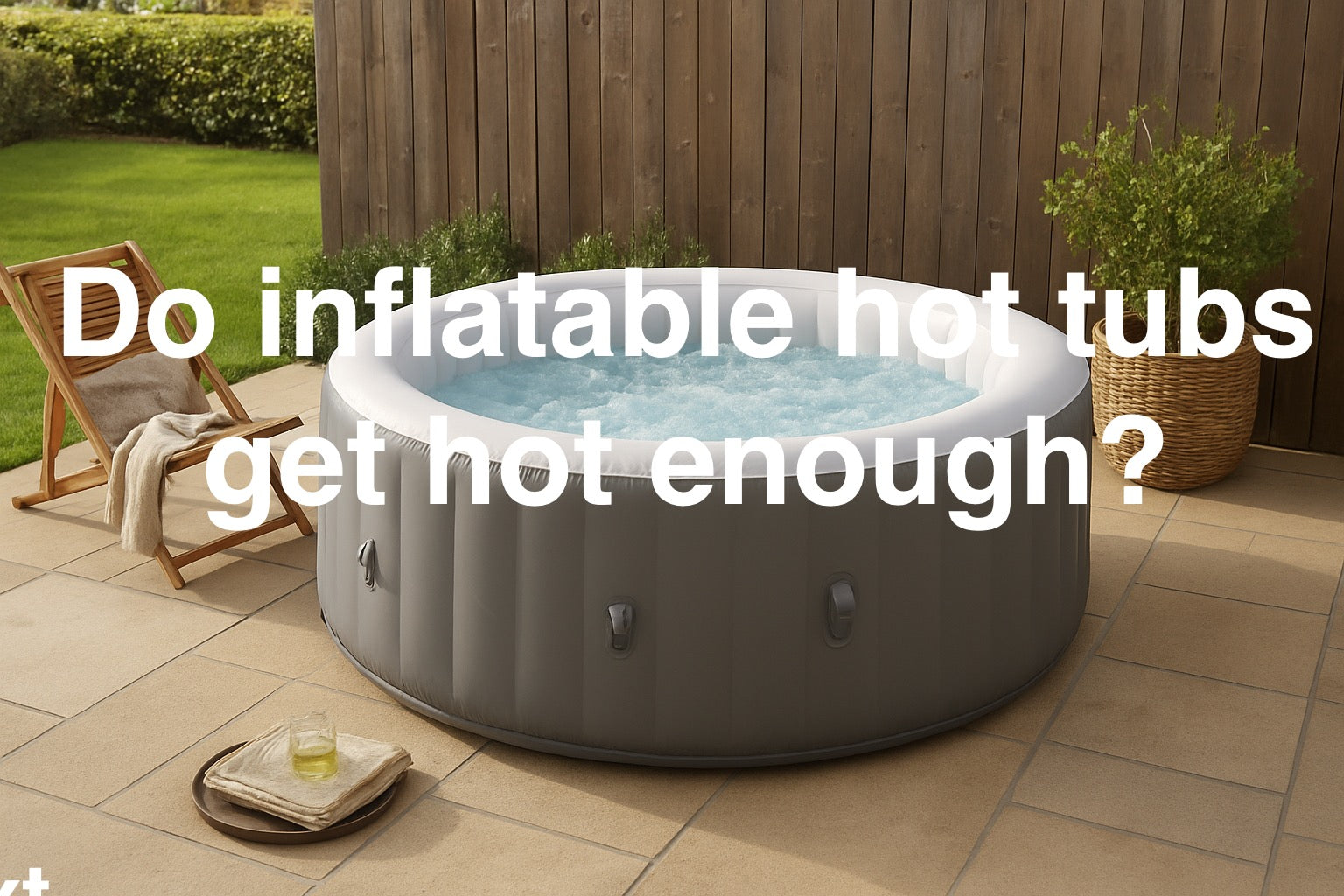
Do Inflatable hot tubs get hot enough?
Ever climbed into an inflatable spa expecting a steaming soak, only to wonder if it’s more “lukewarm bath” than “hot tub heaven”? You’re not alone.
The short answer is yes—inflatable hot tubs can get hot enough for a proper soak, reaching up to 40°C (104°F). But how fast they heat up, how well they keep that temperature, and how they compare to traditional hot tubs… well, that’s where it gets interesting.

How Hot Can an Inflatable Hot Tub Get?
Standard Temperature Ranges
Most inflatable hot tubs are designed to reach 40°C (104°F). That’s the same upper limit as a fixed, traditional spa, and it’s usually more than warm enough to ease tired muscles after a long day.
Some premium models even push slightly higher. For example, a few specialist designs can creep up to 41–42°C, although most stick with the standard maximum.
Factors Affecting Maximum Temperature
Of course, hitting that top temperature isn’t always guaranteed. Factors such as the outdoor climate, how well the tub is insulated, the volume of water, and the heater’s power all make a difference.
In the middle of a chilly UK winter, expect your spa to take longer to heat—and work harder to stay hot. A decent cover and insulated base can help level the playing field.
Are Inflatable Hot Tubs as Hot as Traditional Hot Tubs?
Comparison of Maximum Temperatures
When it comes to sheer heat, inflatable and traditional tubs are evenly matched. Both max out at around 40°C (104°F). So in theory, your blow-up spa is just as capable of delivering a steaming soak as a high-end fixed model.
Differences in Heating Technology
The real difference lies in how they get there. Traditional hot tubs often use gas or heat pump systems, which are quicker and more efficient. Inflatable tubs, on the other hand, rely on electric coil heaters. They’ll still do the job—just more slowly.
Consistency and Heat Retention
Traditional tubs also tend to hold their heat more reliably. With their thicker shells and built-in insulation, they don’t lose warmth as quickly.
Inflatable models can be more temperamental, especially outdoors in colder weather. That said, many newer designs now feature improved insulation, and with a snug, insulated cover, you can still enjoy long, toasty sessions without too much heat loss.
Tips for Achieving and Maintaining Maximum Heat
Want to get your tub up to temperature faster—and keep it there? Here’s how:
Use the Hot Tub Cover
Always keep the cover on when the spa isn’t in use. It traps heat, reduces energy use, and stops you from paying to warm the entire garden.
Pre-heating in a Warmer Location
If you can, set up in a sheltered spot like a garage, conservatory, or under a gazebo. It keeps the wind off and helps your tub heat up faster.
Initial Water Temperature
Skip the icy cold hose water. Filling your spa with warm tap water cuts hours off the heating time.
Insulate the Tub
Put your spa on an insulated mat or foam tiles to prevent heat loss through the ground. Some owners even wrap their tubs with insulating jackets for extra efficiency.
Avoid Using Jets While Heating
The bubbles are fun, but they also cool the water by pulling in cold air. Keep them off until your tub is nice and hot.
Maintain a Clean Filter
A dirty filter forces the heater to work harder, slowing things down. Clean or replace it regularly to keep your spa efficient.
Heating Time: How Long Does It Take to Heat an Inflatable Hot Tub?
Factors Affecting Heating Time
Several things affect heating time:
-
Ambient air temperature – colder weather slows things down.
-
Starting water temperature – warm tap water gives you a head start.
-
Size and water volume – bigger tubs take longer to heat.
-
Heater wattage – higher power equals faster heating.
Typical Heating Time Estimates
Most inflatable spas heat at about 1–2°C per hour.
That means:
-
Filling from cold tap water in winter? You might wait 12–24 hours to reach maximum heat.
-
Starting with warm water on a mild summer day? You could be soaking in just 4–6 hours.
Final Thoughts
Inflatable hot tubs do get hot enough for a relaxing soak. They may take longer to heat and need a little extra care with insulation, but they’re more than capable of delivering that spa-like experience at home.
Set yours up right, use a cover, and be patient with the heating process—you’ll be rewarded with warm, bubbling bliss.
Have you checked out our other posts?
Can Inflatable Spas Be Used In Winter?
Should I Empty My Inflatable Hot Tub In Winter?
What Temperature Should I Keep My Inflatable Hot Tub When Not In Use?
How Long Do Inflatable Spas Take To Heat Up?
How Long Can Water Stay In An Inflatable Hot Tub?



Leave a comment